We recently received some fascinating donations from Jerry Carver of Lexington, South Carolina. These were given to us in the hope that they could be of some use to our project. Identifying exactly where these pieces came from was not easy, and we thank all of those on Facebook who came to our aid in in this matter.
They are not correct for the B-17. In fact, they are both Navy bomb release mechanisms.
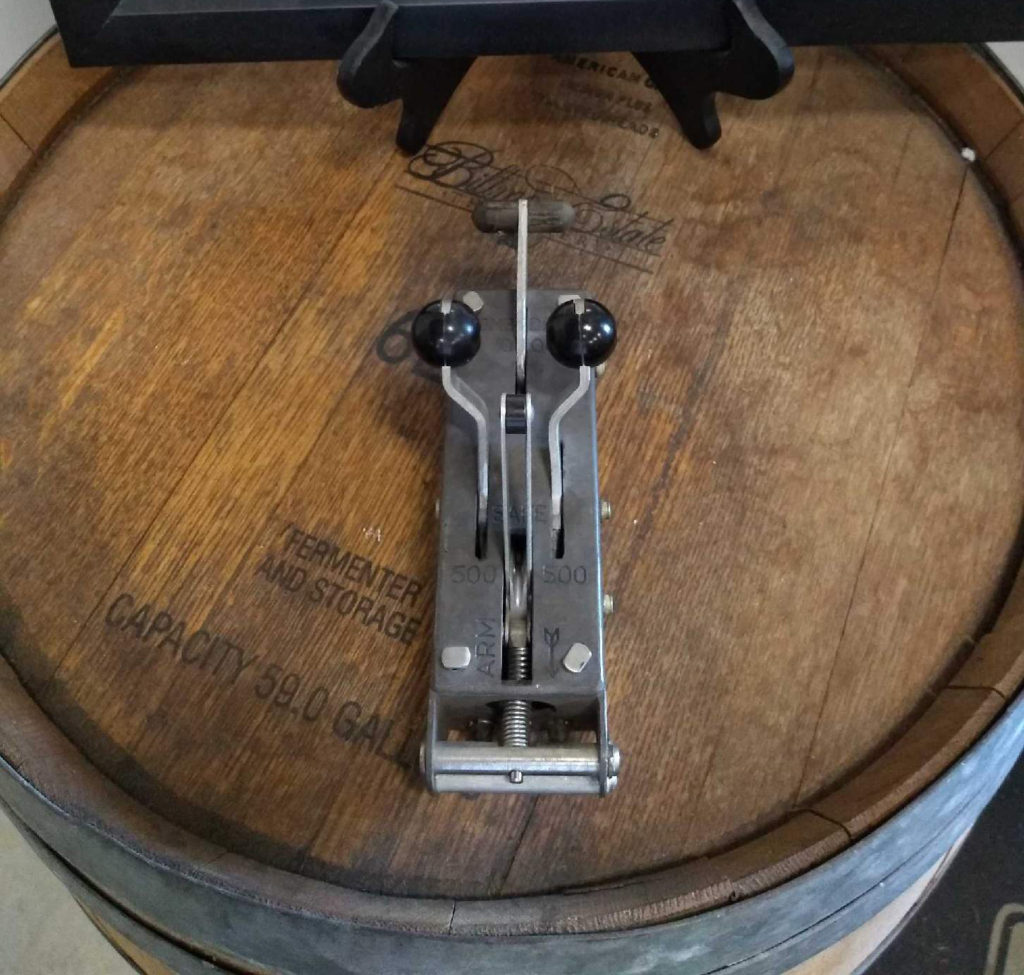

This first piece is a Mk. 29 Bomb Release Lever Assembly. We were actually donated a pair of these. While apparently issued to a variety of aircraft, we could only find references to two: the TBD Devastator and TBF/TBM Avenger. Of these, we could only find photos of it installed in the former.
The design is intended for large Navy bombers with internal bombbays (like those previously mentioned). The assembly consists of four spring-tension release levers, two of which were connected to external racks, with a third lever being connected to the internal bay. The third lever also acts as a salvo for the other two levers. The fourth lever, located on the bottom, acts as a safety switch for other three.

Three Devastators of Naval Operational Training Command in flight over southern Florida. Headquartered in Miami, this command consisted of a series of air substations, with NAS Fort Lauderdale being the primary school for torpedo bomber squadrons.
The TBD Devestator torpedo bomber, shown here, entered service with the US Navy in 1937 as the most advanced naval aircraft in the world. An all-metal monoplane, the Devastator featured a number of firsts in naval aviation, including folding wings and an enclosed cockpit. However, the Devastator was wildly obsolete by the time the US entered the Second World War. Such is the speed of aviation progress.
The Devastator sealed its place in history at the Battle of Midway on 4 June 1942, suffering terribly. Of the thirteen launched by Yorktown (CV-5), eleven were lost, of the fourteen launched by Enterprise (CV-6), nine were lost, and of the fifteen launched by Hornet (CV-8), all aircraft were lost and only a single airman survived. The 39 remaining Devastator units were immediately withdrawn from service after the debacle. It should be noted though that the TBF Avenger (which eventually replaced the Devastator) complement launched from Midway Island did not fare better, as it lost five of its six aircraft. In truth, the real culprit was poor training and lack of fighter cover as, in the case of the latter, only six fighters even managed to locate the Japanese fleet during the battle.
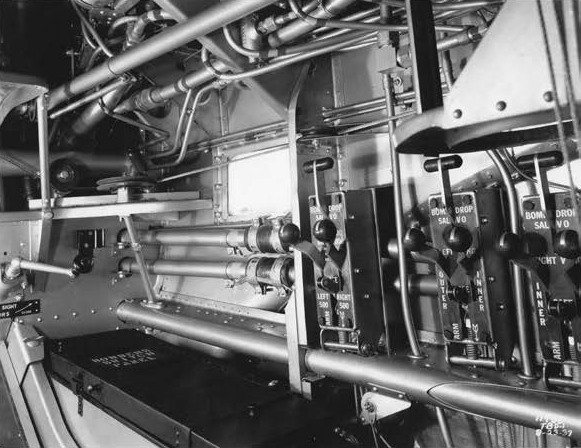
The bombardier’s station aboard a TBD Devastator (facing forward right).
While designed as a torpedo bomber, the Devastator could also act as a level bomber. Mounted just to the left of this photo was the same Norden bombsight so famously associated with Army bombers like the B-17. In actuality, the sight was developed for the Navy in 1931 under a dedicated source contract. As such, the Army actually had to buy its bombsights from the Navy. When war broke out, the Navy refused to allow the construction of a separate Norden factory for Army production, and for a time, it appeared that the Army would have to supplement its few Nordens with sights made by Sperry Gyroscope. However, Naval attempts to use the Norden during the Guadalcanal campaign (August 1942 – February 1943) proved fruitless, and full production for bombsights was begrudgingly transferred to the Army in 1943.
The set-up in this Devastator is worth noting. The Devastator was a poorly-powered aircraft and could only carry 1,200 lbs of bombs. Generally this meant either a single 1,000 lb bomb in the bay, or a single 500 lb in the bay with two more mounted externally. Since the bay-mounted bomb could not be dropped until the external ones were released – the Devestator lacked wing racks – additional Mk. 29 mechanisms ensure each bomb can be dropped individually.
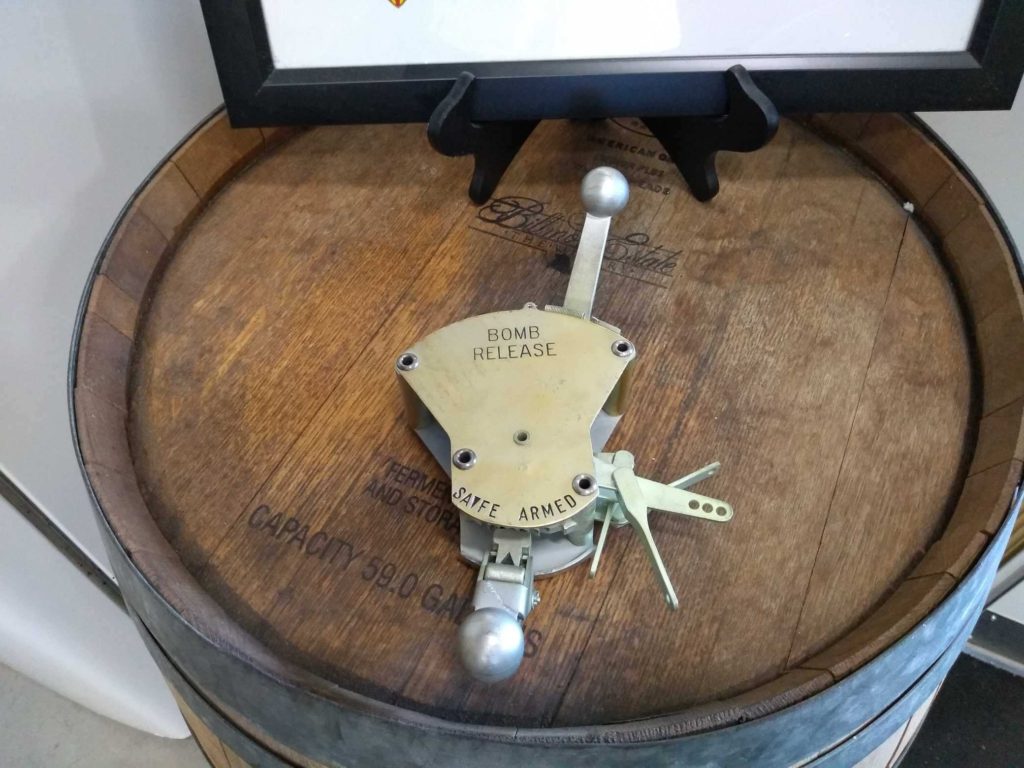
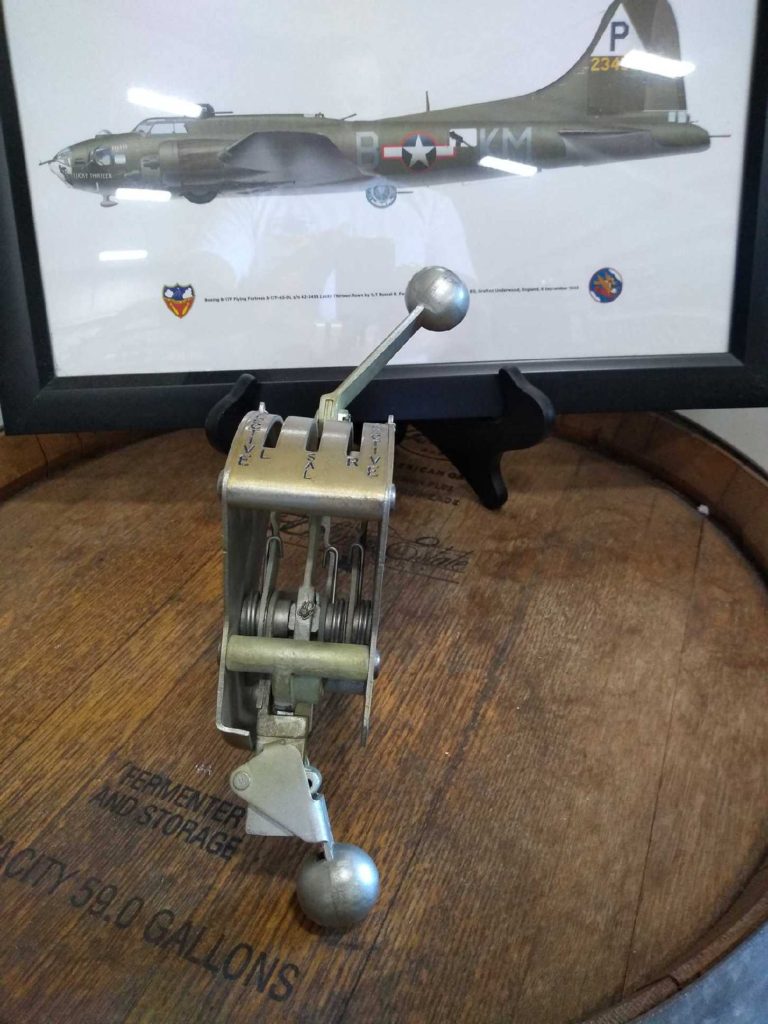
This next piece is a Mk. 4 Bomb Release Lever Assembly. Once again this assembly was used on a variety of aircraft, and appropriately enough, it is a period complement of the two donated Mk. 29s. In researching this piece, we found references to it being used on the SB2U Vindicator and SBD Dauntless – both dive bombers.
The assembly is designed to connect to a trio of bomb racks, with a pair of wing mounted bombs and single bomb mounted in the center. A lever for each of these racks on the forward bottom acts as a selector switch. The ball lever on the rear bottom arms the bombs when activated.
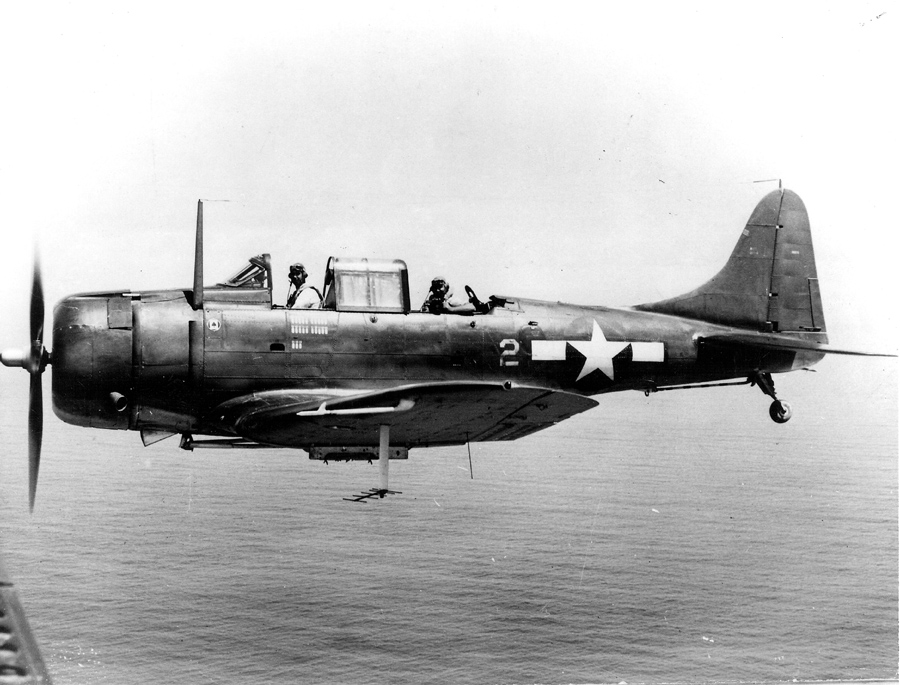
A SBD-5 piloted by Maj Elmer P. Glidden (VMSB-2312) over the Gilberts in early-1944. The tail guns are stowed away and the tail gunner is taking a picture of the photographer.
Developed as a Northrop design for Douglas Aircraft, the SBD first entered production in late-1940. While the Dauntless was slow, it gained a favorable reputation for its robust design and forgiving handling. The SBD directly sank more Japanese shipping than any other Allied bomber during the war,and holds the rare distinction of being credited with more aerial victories than losses to enemy action. The Dauntless’s last major combat operation was the Battle of the Philippine Sea (19 June 1944), after which it was phased out in favor of the larger SB2C Helldiver. Since the Helldiver was laden with bugs and too large for use on small carriers, aircrews were vocal in their preference for the old Dauntless. In fact, this preference went all the way through the ranks, with Capt J. J. “Jocko” Clark of the USS Yorktown (CV-10) ordering his Helldiver complement be returned in favor of the old Dauntless upon replacement.
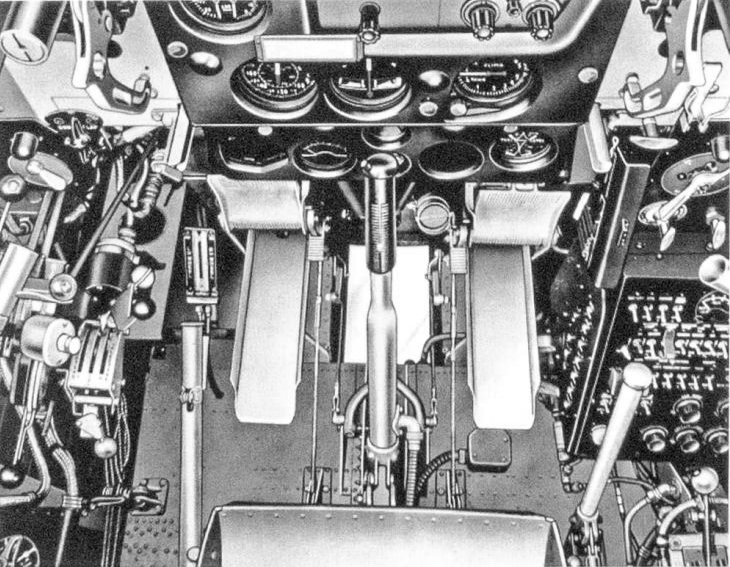
The photo above is the pilot’s point-of-view when looking at the floor of the Dauntless cockpit. The Mk. 4 Bomb Release Lever Assembly is visible to the left side of this photo.
